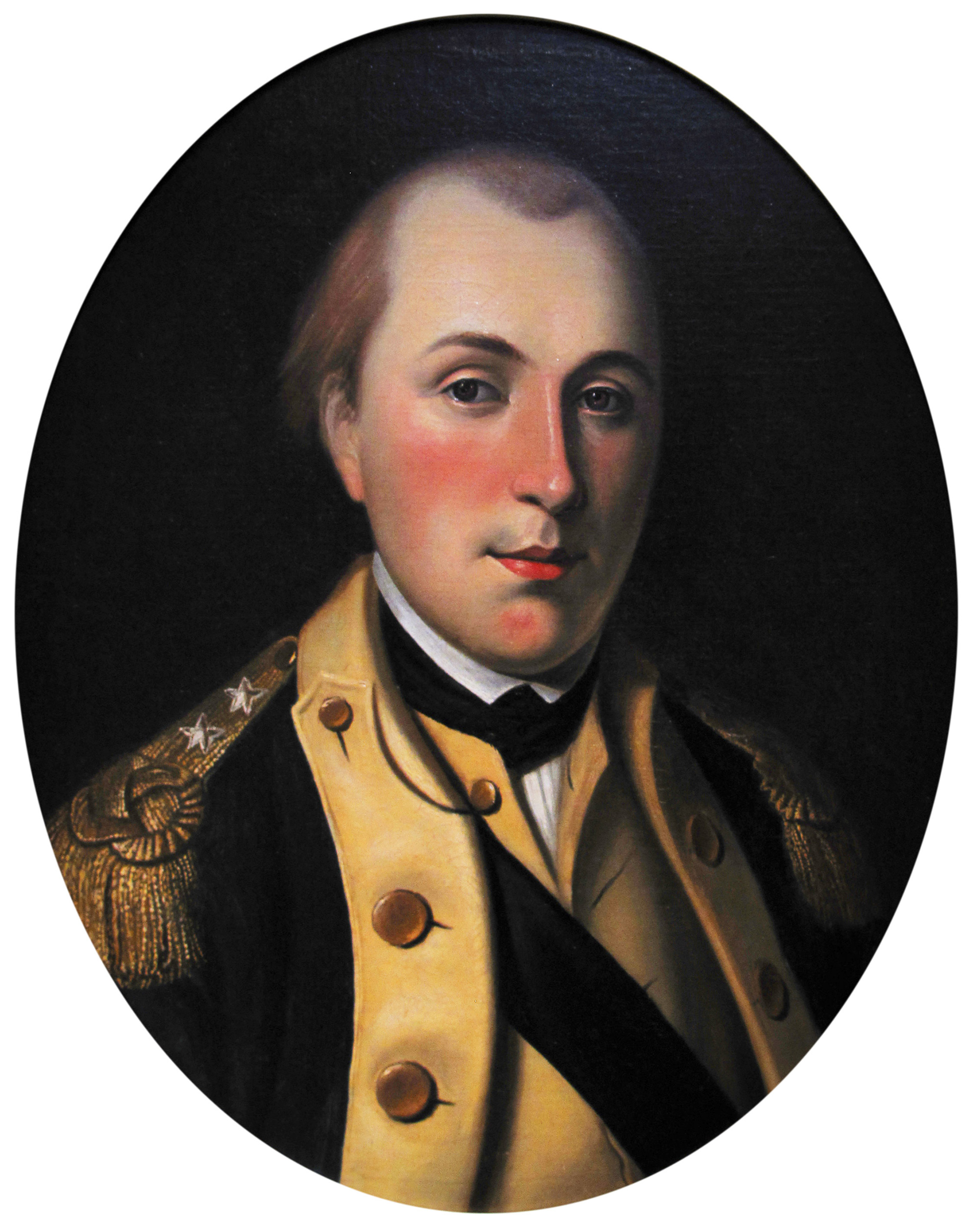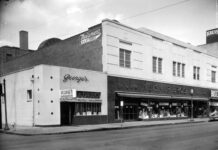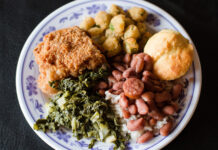
Two hundred years ago, the Marquis de Lafayette, the last surviving major general and hero of the American Revolution, was cordially invited to America for a grand tour “in most grateful recollection of your important service,” wrote President James Monroe, who had served with Lafayette under General George Washington. What was supposed to be a four-month trip transformed into a 13-month rolling event, with travel “by steamboat, stagecoach, carriage, horseback and sailing ship,” wrote the Mobile Press-Register in 2007. Everywhere he appeared over the course of 6,000 miles he was welcomed with lavish entertainment, fetes, concerts, parades, games and speeches. American citizens were overjoyed to show off and to honor the famous, 67-year-old aristocratic Frenchman who epitomized valor and honor, and was key to the country’s most significant victory.
“The Guest of the Nation,” as Lafayette was termed, had first visited American shores in 1776, when he was 19 years old and eager to join the Revolutionary War. By then, he’d already served as a French musketeer at age 14 and as a captain in the dragoons at age 18. Committed to the ideals of the Enlightenment and the cause of liberty percolating in the colonies, the noble teenager said, “my heart was dedicated.” His taste for adventure also played a role in his decision to fight for the Americans. He chose as the motto for his coat-of-arms the words “Cur Non,” meaning “why not?”
Why not, indeed! Determined to make a difference, he bought his own ship, the Victorie, left his 17-year-old wife, Marie Adrienne, and baby daughter in safe hands and headed for these lands where he helped steer the course of our destiny. America, in turn, rerouted his fate.
Orphaned at age 12, he found a father figure in George Washington, say his biographers. He served on the commander’s staff, and Washington, his senior by 26 years, recommended that the Marquis head a division of his own. One of the richest men in France, Lafayette served without pay and provided for his troops out of his own pocket. The military relationship and friendship between the two generals continued from the Battle of Brandywine, through the hardships of Valley Forge and conflicts from New York to Virginia. From 1779-1780, Lafayette voyaged to France and returned, having secured 6,000 troops and additional aid for the American side. In the fall of 1781, Major General Lafayette and his troops surrounded the British at Yorktown. Together Washington and Lafayette accomplished the defeat of General Cornwallis and his Redcoats, ending the Revolutionary War. Lafayette was 26 years old. He had reached maturity on American soil.
Feather in Mobile’s Cap
Making the cut for General Lafayette’s 50th anniversary farewell tour was a pivotal moment for Mobile. Freshly American after French, English and Spanish colonial rule, the city on the rise was emerging from its past depiction as a “raw village.” Alabama had been granted statehood only a dozen years earlier. In that interim between being considered an old Spanish town and becoming a national city, Mobile’s population swelled from 819 residents in 1819 to 2,800 in 1822. By the time of Lafayette’s visit on April 7, 1825, the chief Alabama port could boast a fine foundation of 240 dwellings, 110 stores and warehouses, two churches and three “commodious hotels,” according to architectural historian Elizabeth Gould.
The merchants who flocked here lamented only one missing ingredient in the new frontier’s success: culture. Without culture, citizenship and commerce would not be sustained. For one thing, sweethearts, wives and mothers preferred civilization to saloon life. Thus, the same hardy fellows who built businesses turned their attention to creating a literary society, establishing Barton Academy and generating events through their Masonic chapter, aptly named Friendship.
What could be more indicative of Mobile having arrived commercially and culturally than a visit from the Frenchman who epitomized brave achievements and gentlemanly behavior? Lafayette’s appearance authenticated Mobile’s debut as a convivial, civilized municipality.
Event Planners and Influencers
The Mobile Bay area was Lafayette’s final stop in a nine-day tour of Alabama. J.B. Hogan, at Governor Israel Picken’s request, singled out members of a committee of Mobilians “to receive and prepare an entertainment for Genl. Lafayette; in making this selection I have an eye only to such as are known for their public spirit, as well as knowledge in such matters. I am convinced that you cannot select a more suitable Committee from that city.”
Hogan, a developer and customs collector in Mobile, compiled his list of planners from leaders of business, civic and social organizations.
Five-time mayor (or president) of Mobile, Samuel Hilary Garrow chaired the Lafayette Committee and hosted the Marquis in his two-story, wood-frame dwelling on the corner of Jackson and Government streets. A historic marker by the downtown Holiday Inn notes the spot of the residence, once considered the nicest in Mobile. In his commercial life, the mayor owned and operated a cotton seed mill and a brickyard on the western shore of Mobile Bay. Garrow’s Bend is named for him.
In addition to his mayoral credentials, Garrow was a founder of The Mobile Society of Literature, chartered by the State of Alabama in 1824. The Society was comprised of prominent 19th-century Mobilians. Many Society members served on Pickens’ Lafayette Committee in roles that utilized literary talents, such as composing letters, welcoming speeches and toasts, or they were called upon to handle duties like procuring household supplies and steamboats. Among the group was Captain Chester Root, a customs collector; Dr. Robert Carr Lane; William Hale, Chief Justice of the Mobile County Court; T. T. Holt, an alderman; Philip McCloskey, a prominent developer; Colonel A. B. Smoot and Colonel Silas Dinsmoor, who helped escort the General to New Orleans; and Willoughby Barton, the state legislator who drafted the legislation to create Alabama’s first state school, Barton Academy.
Two of the most diligent society members drafted into action were Dr. Ezekiel Webb, head of finance, and his son-in-law, Dr. Thomas L. Carthy, secretary. Alabama’s bill to properly honor its renowned guest totaled $15,715.80, about $400,000 in modern currency. Although citizens were magnanimous in their donations of time and money, hospitality costs burdened the resources of the young state for years. Webb and Carthy had the unpleasant job of pleading for Mobile’s share of debt relief.
Lafayette, like presidents George Washington and James Madison, was a Freemason. Brethren from Mobile Masonic lodges participated in all aspects of raising money and handling logistics. Among them were Henry Gunnison, a shipping agent and owner of Gunnison’s Mill (Gunnison’s Creek in Saraland is named for him); Henry Vassal Chamberlain, a tax collector, county sheriff and Chief Justice of the Orphans Court; Samuel G. Swift, a contractor who built the Lanier Avenue house where novelist Augusta Jane Evans Wilson lived after marrying Lorenzo Wilson.
Alabama’s 1825 Timeline
The Festivities in Mobile

All the Committee’s hard work was in place. The speeches were written, transportation and housing were in order, troops stood at attention, the town was dressed up as never before. Mobile was ready.
April 7, 1825. “The arrival of the steamboat was announced by discharges of artillery from Fort Conde,“ wrote Lafayette’s secretary and son-in-law Col. Auguste Levasseur, who was among his travel companions. His other travel companions were his 44-year-old son Georges Washington de Lafayette, a manservant Bastien and a little dog named Quiz, presented to him in December 1824. Quiz was “very fond of me,” Lafayette wrote in 1825, “but on her account much trouble has been occasioned.” (Quiz died in a shipwreck incident on the Ohio River in May of 1825.)
“He was conducted to the center of the town under a triumphal arch, the four corners of which were adorned with the flags of Mexico, the Republics of South America and Greece. In the center was that of the United States. Here he was complimented by Mister Garrow in the name of the city and in presence of the municipal body. He was then led to an immense hall, expressly constructed for his reception. He there found all the ladies, to whom he was presented by the governor, after which Mr. Webb addressed him in the name of the state. . .,” said Levasseur. Lafayette accepted “a public dinner, a ball and a masonic celebration.”
Only one place was large enough for the ball, the hotel on the southwest corner of North Royal and Saint Michael streets. Old Mobile French Creoles Louis Charles Demouy and wife Irene Grelot owned and managed the hotel later named Lafayette House. For a time, the site, now a parking lot, housed The Mobile Press-Register. The ball has been described as brilliant “with 300 ladies…and a still greater number of gentlemen.” One group of women were of particular interest.
Lafayette and the Walton Ladies
One of the people the General especially asked to visit on his nostalgic tour was Dorothy Camber Walton, “declaring that it was his one desire to see again that beloved friend of other and more troubled years,’ according to the blog “History of American Women.” Dorothy was the widow of George Walton, who, at age 26, was the youngest man to sign the Declaration of Independence and later became a governor of Georgia. George, Dorothy and the Marquis had met as early as 1777. Sixty-five-year-old Dorothy, living with her son’s family in Pensacola in 1825, felt too feeble to join her old friend in Mobile. She sent instead her daughter-in-law Sarah (Sally) Minge Walker Walton and her granddaughter, a gifted linguist named Octavia. Dorothy entrusted her 14-year-old granddaughter with a Charles Wilson Peale miniature of George Walton to show the General. Frances Gibson Satterfield picks up the story in her 1987 book “Madame Le Vert”:
“Lafayette grabbed Octavia to him and said in French, ’You are the very likeness of my old friend.’ He had to know all about Dorothy, finding it difficult to believe that she was now an old woman. ‘She was so beautiful, and my dear friend, George Walton, so brave and noble, is dead! I loved him like a brother.’ Sally came to take Olivia away so that she would not monopolize him while others at the reception waited to shake his hand. He would have none of it, wishing to know how she learned to speak such fluent French…he predicted for Octavia a ‘brilliant future.’ That night, Octavia was allowed to attend her first ball. From all reports it was difficult to decide who enjoyed it more, Sally or her daughter. The next day they joined Lafayette’s party down Mobile Bay, where they parted company, Lafayette going to New Orleans and the Waltons back to Pensacola.”
About 12 years later, Octavia Walton, known as “one of the most charming women in the world,” married Dr. Henry Strachey Le Vert. Madame Le Vert, herself a writer, turned their Federal-style mansion into a cultural salon visited by an international assortment of famous guests. Alas, the home was demolished in 1965 but Dr. Le Vert’s office still stands at 153 Government Street, near the entrance of the Bankhead Tunnel. The Oakleigh House Museum still proudly displays portraits of “Miss Walton of Florida” and Mrs. Walton, her mother. The Dorothy Walton House, now at 221 East Zaragoza Street, in Pensacola, was home from about 1822-1832 to the three Walton women Lafayette admired: Dorothy, Sally and Octavia.
Final Salutes
The “uninterrupted festivity and enjoyment” of Lafayette’s visit, as President John Quincy Adams described it, continued until the General had visited what back then was all 24 states. “God bless the American people, each of their states, and the federal government,” Lafayette said during his last address in this country. “Accept this patriotic farewell of an overflowing heart; such will be its last throb when it ceases to beat.”
He disembarked in France on October 4, 1825. Less than a decade later, May 20, 1834, the champion of America and France died in Paris, with soil from Bunker Hill to cover his grave.
One of his last remarks is a reminder of the tender side of the formidable hero: “I have but one thing to regret in all my travels, and that is the loss of my little dog who loved me so much.”
200th Anniversary Celebration
Celebrate the Marquis de Lafayette’s historic visit to Alabama with reenactors, proclamations and family-friendly festivities!
FAREWELL TO LAFAYETTE
Sunday, April 6: 1:30 – 4 p.m.
The Masonic Lodge, Perdue Hill // Free admission
LAFAYETTE IN MOBILE
Monday, April 7: 12 p.m.
Fort Conde, Mobile // Free admission





